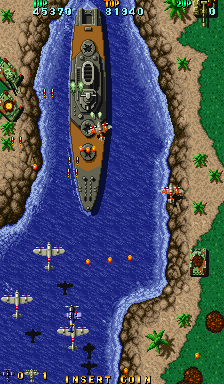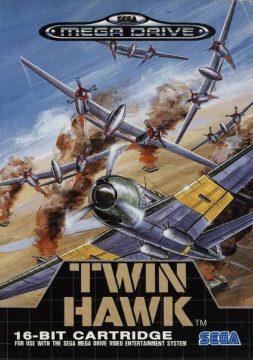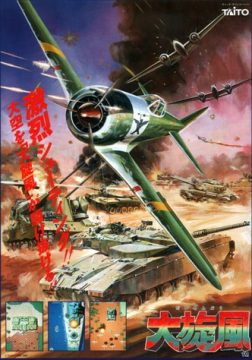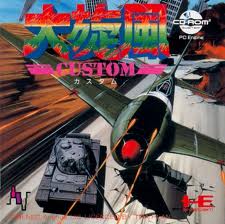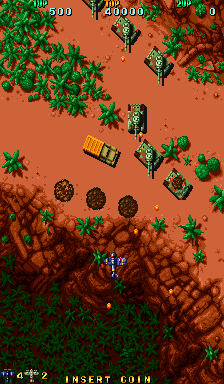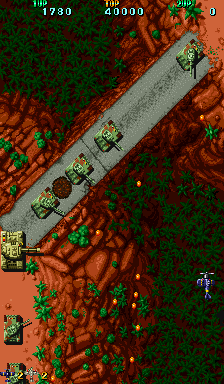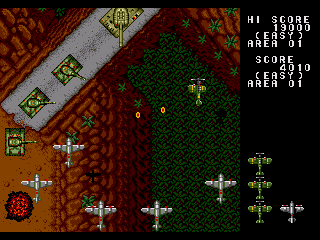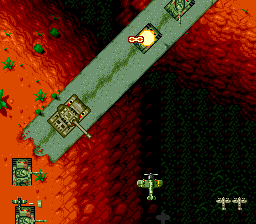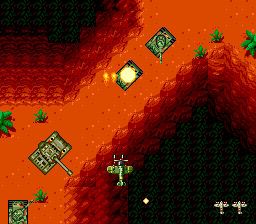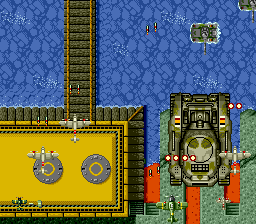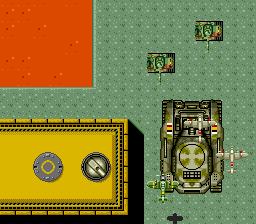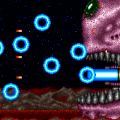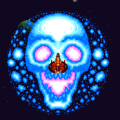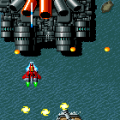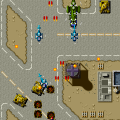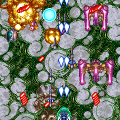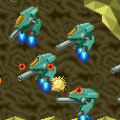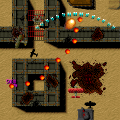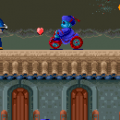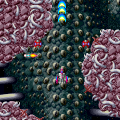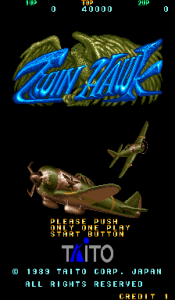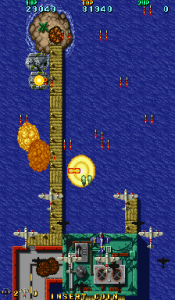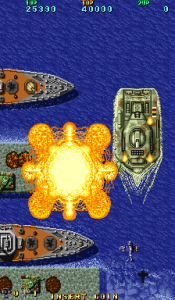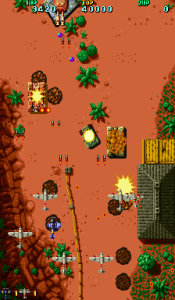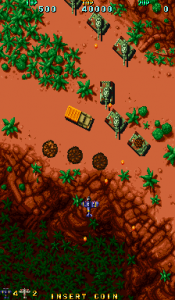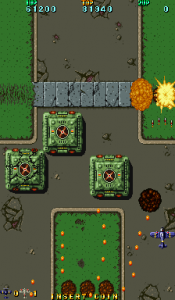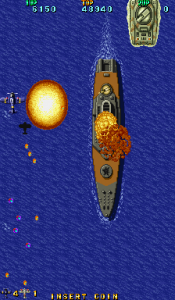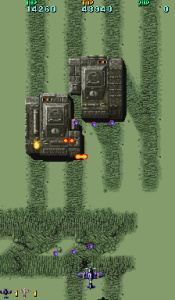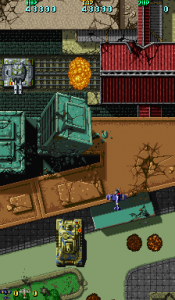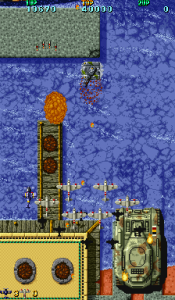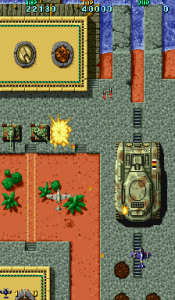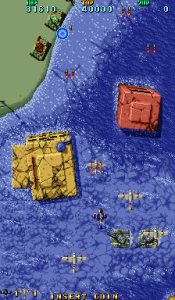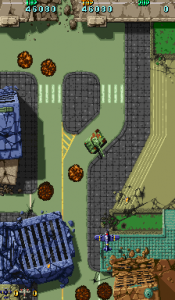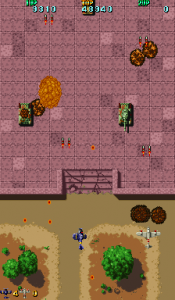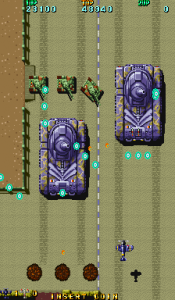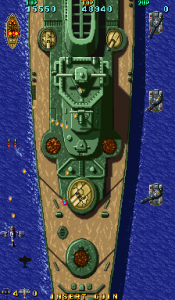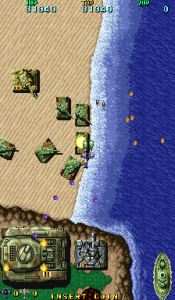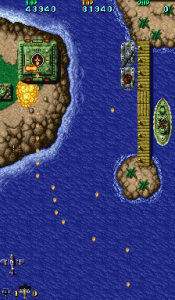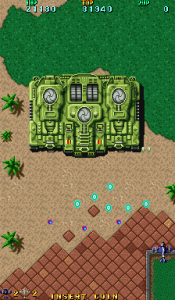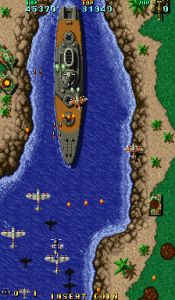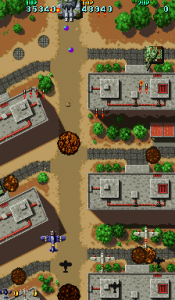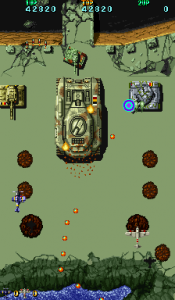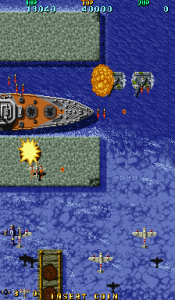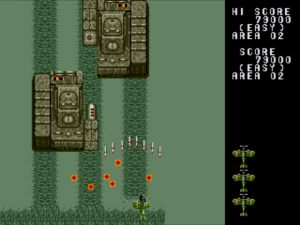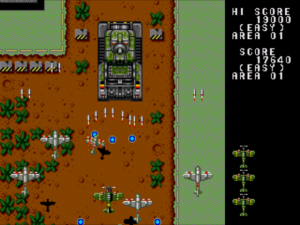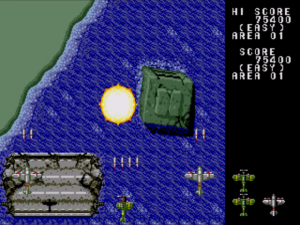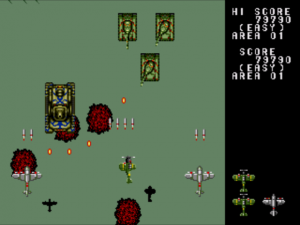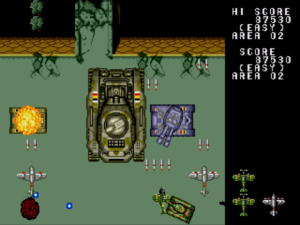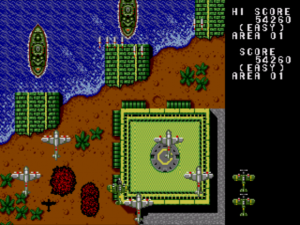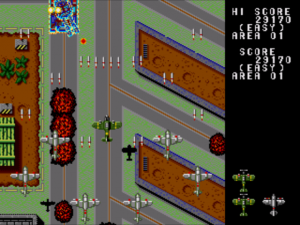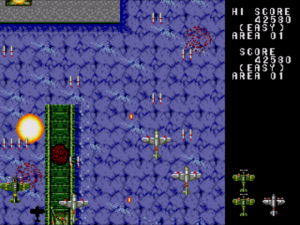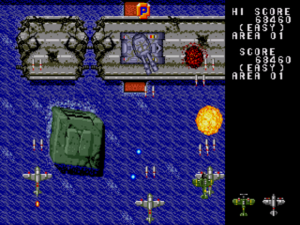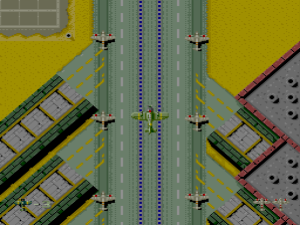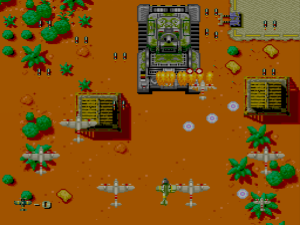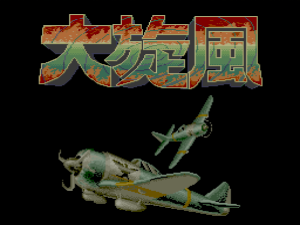Twin Hawk, directed by Lee Ohta, is notable for giving the player the ability to command a whole squadron of planes in addition to the normal player character. It’s sometimes lumped together with the Tiger-Heli series, but the gameplay is closer to a tighter, smoother Flying Shark. The only perceivable link to Tiger-Heli is the fact that it has the word “Twin” in its name, much like Twin Cobra. The strangest thing about Twin Hawk is that there are no flying enemies. Every last one of them are boats, tanks, and other land-and-sea based foes.
The storyline involves the fictional countries of Gorongo and Fuangania going to war. Fuangania apparently has absolutely no airplanes, showing a huge weakness. The President of Gorongo, humorously called President Bratt, sends in the special air force Big Whirlwind to take down Fuanganian forces. That’s you; you’re the guys in Big Whirlwind, all of them.
Twin Hawk feels very relatively minimalistic, even for a late 80s shoot-em-up. You only get one weapon, a forward shooting gun that can be powered up to shoot a little bit wider. The only other weapon you get is a special button to call in your squadron. Once they come in, the real fun starts. Each plane in your squadron fires when you fire, moves right when you move right, and left when you move left. They never move forward or backward, and they always move much slower than your plane, but otherwise go in perfect formation. If you fly into them, you simply go right through them, making the cluttered screen seem far more manageable. Whenever one of your fellow planes is shot, it catches fire and quickly tries to dive bomb any enemies on screen in a blaze of glory. Interestingly, if your plane goes down while your squadron is out, the entire remaining squadron will do a suicide strike with you, likely taking out whatever killed you in the process. Now that’s loyalty!
One strange option is to turn your squadron into a bomb. By pressing the button that calls in your squadron again while they are flying in, they will instead fly off the screen and carpet bomb the place. This may not always be a very good idea, as much of what makes Twin Hawk so fun and interesting is trying to keep your friends alive and covering the screen in your bullets.
While Twin Hawk‘s graphics seem washed out, dark, and drab, its sound is amazing. The first level in particular has great music that starts out slow, but turns into a very fast drum beat that can really get you pumped and in the mood to shoot down anything.
One of the best moments in Twin Hawk is the final level. On this level, large enemies and mini bosses start spewing out simple bullet patterns that are impossible for your entire squadron to dodge. This is a war, after all and not everyone is going to survive. The game throws so much at you that no matter how much you hoard your power-ups to call in more friends, they will not survive. Then, the final boss comes, the hardest fight in the game and you have to fight it all alone without anyone else’s help, which becomes the most intense and dramatic moment in the game.
The Genesis version has some graphical downgrades in order to fit it into a cartridge, but the sound remains perfectly intact and is the best home version. Like the port of Truxton, the right side of the screen is devoted to a status bar. Daisenpuu was ported to the PC Engine twice, first on a HuCard, and later on CD-ROM. On the surface they look identical, with some slight graphical dowgrades again, although the visuals take up the full screen. The sound takes a hit too, but you can still recognize everything for the most part.
But the CD-ROM port is, strangely, inferior. Probably due to the limited RAM of the PC Engine and the inability to stream data, the levels are no longer continuous, but are instead broken down into areas. On the plus side, that means brand new bosses at the end of each stage. On the downside, many background details are removed. For example, in the first stage there’s an area where tanks are supposed to be driving over a bridge. Apparently those tiles couldn’t fit into memory, so now it looks like they’re part of a canyon. Later on, you’re supposed to fly over an ocean. That doesn’t happen either – this particular section looks like the rest of the stage now. Some enemy patterns have changed, some sections are added or missing. Even the explosions are missing animation frames and look kinda bad. Other than the bosses, the only advantage is the CD audio music, which isn’t terribly good anyway.
Screenshot Comparisons

Arcade
Genesis

PC Engine
PC Engine CD-ROM

PC Engine

PC Engine CD-ROM
Screenshot Comparisons
